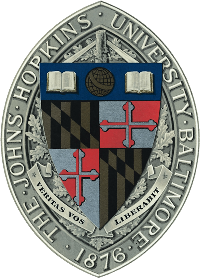Team:Johns Hopkins
From 2010.igem.org
SunPenguin (Talk | contribs) |
Arjunkhakhar (Talk | contribs) |
||
| Line 56: | Line 56: | ||
*We are looking into creating a URA3 gene (required for uracil synthesis) downstream of our CDRE equipped promoter region, to create yeast cells whose growth is dependent on this gene being transcribed. Thus we plan to have a system where you could text a computer which was hooked up to your eletro stimulation device and you could take cells in and out of the growth cycle, just by simple preprogrammed voltage signals put out by the computer. | *We are looking into creating a URA3 gene (required for uracil synthesis) downstream of our CDRE equipped promoter region, to create yeast cells whose growth is dependent on this gene being transcribed. Thus we plan to have a system where you could text a computer which was hooked up to your eletro stimulation device and you could take cells in and out of the growth cycle, just by simple preprogrammed voltage signals put out by the computer. | ||
| - | *We envisage a voltage activated transcriptional response to be very useful in cardiovascular | + | *We envisage a voltage activated transcriptional response to be very useful in cardiovascular research for example modeling arrhythmias in cardiac tissue, because using our system of voltage (or calcium influx) activated transcription it is possible to weed out cells that display action potentials, that is live muscle cells that are contracting. We hypothesize this could be done by causing a selectable transcriptional response to the calcium influx of the action potential. |
| + | |||
| + | *We believe that the concept of voltage controlled transcription in yeast has large industrial applications, specifically in the field of fermentation. By designing yeast that are taken in and out of the growth cycle by simple voltage signals we would be able to dynamically control yeast population density and hence fermentation rates in bioreactors. We hypothesize that this could be done by having a gene required for growth downstream of our CDRE containing promoter in a yeast strain where this same gene is knocked out. | ||
|} | |} | ||
{| | {| | ||
Revision as of 07:28, 27 October 2010
|
Genetically engineered Saccharomyces cerevisiae that is responsive to voltage signals at a transcriptional level. ' Using our specifically designed CRZ1 binding elements in tandem with fluorescent reporter genes, we characterized calcineurin-CRZ1 mediated calcium response pathway in yeast. In doing so we have taken the first step in creating an interface between cellular systems and computers by allowing cells to respond to voltage signals, the language of computers. Possible applications:
|
|
Team: We are a team of 9 undergraduate students deeply interested in synthetic biology. We hail from a variety of disciplines including, chemistry, biology and engineering. We’re a fresh new team with varying levels of experience united by our passion for science. |
|
Our Accomplishments
|
 "
"


